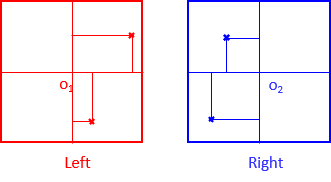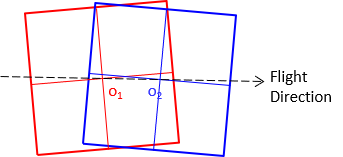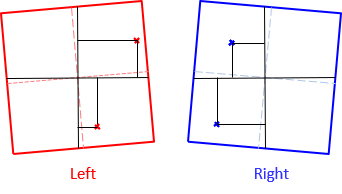3. Photo Coordinates
Rarely is a flightpath perfectly straight, Figure I-7, particularly in a strip of three or more photos.
 |
| Figure I-7 Curved Flight Path |
When a steroplotter is used for map compilation the diapositives are mounted and then subject to Relative and and Absolute orientations. Relative orientation builds the 3D neat model, recreating the geometry at expossure, including the fligh path. Absolute orientation locates the model correctlty in 3D space.
Measuring directly on paper prints generally means using the photo's fiducial coodrinate axes, Figure I-8. This is fine for some lower accuracy appliucations.
 |
| Figure I-8 Fiducal Axes |
Recall that parallx is defined as the image position shift between two photos in the direction of flight. In Figure I-8, the y-coordinate of both points should be the same on both photos (subject to measurement erros, of course). If they're appreciably different, then there is an unaccounted error.
The x-axes on the photos should be in the flight direction, the y-axie perpendicular to it. To define the axes system, each photo's principle point is located on the other photo. Connceting them defines the flight direction on each photo, Figure I-9. This is each photo's x axis.
 |
| Figure I-9 Transferring Principle Points |
The y axes is perpependicular to the x-axes through the principle point. Coordinate measurements are made with respoect to this new coordinate system, Figure I-10.
 |
|
Figure I-10 |